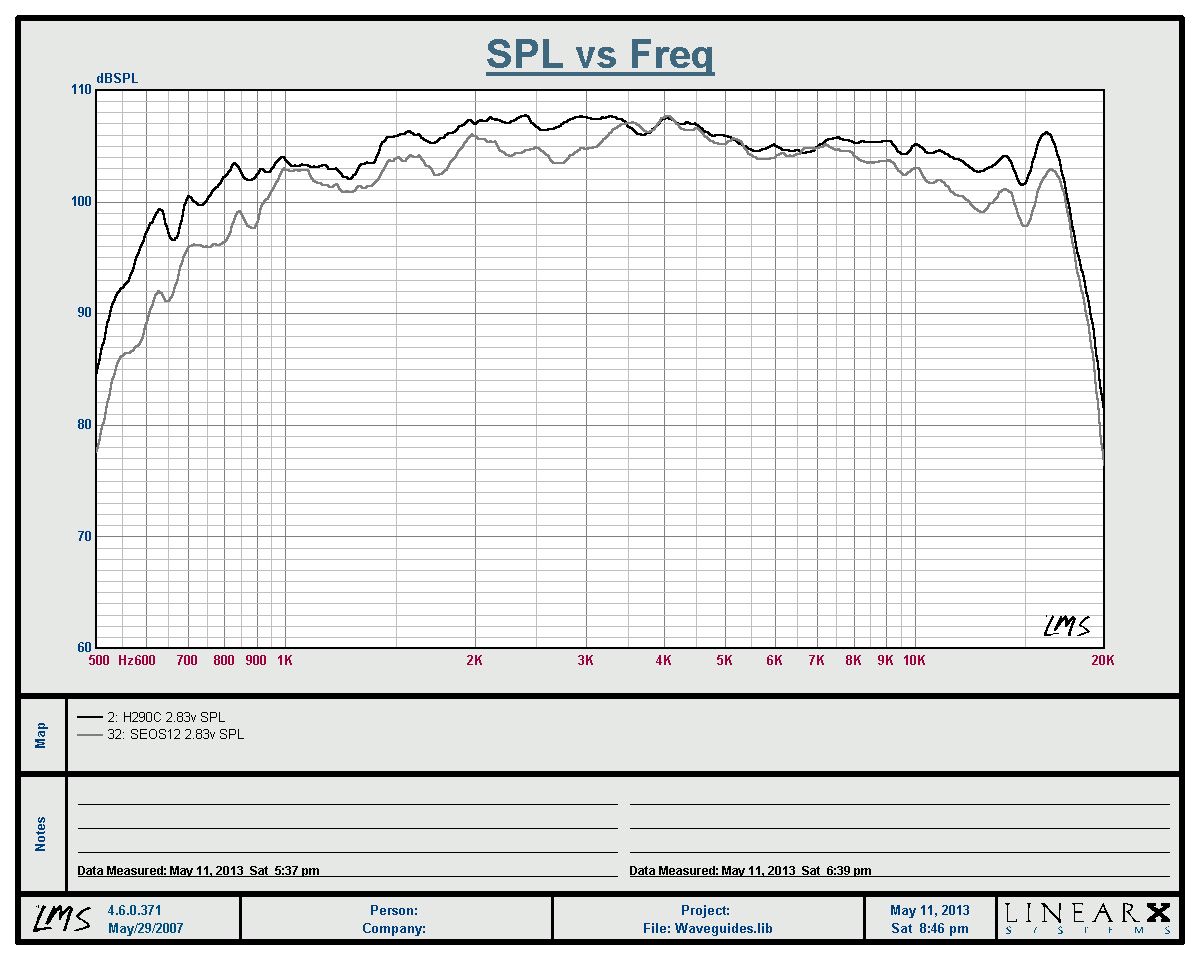|
Home » Sponsored » Pi Speakers » 4Pi crossover study
| Re: 4Pi crossover study [message #77207 is a reply to message #77204] |
Thu, 18 July 2013 22:18   |
 |
 Wayne Parham
Wayne Parham
Messages: 18991
Registered: January 2001
|
Illuminati (33rd Degree) |
|
|
The π crossover will not work very well on the SEOS12 because SEOS horns have too much ripple. Designers using this horn usually incorporate notch filters to get decent response. To me, this is a deal breaker. That's why I did not adopt that horn in my designs.
You can use notch filters to smooth the response, but I don't think it sounds right on any horn I've ever used with this same problem. I walked away from horns like that years ago for this very reason.
The SEOS ripple is about 5dB, and it is definitely audible. So the crossover needs to do something about it. When Erich asked about the notch filters in the crossovers his designers were using, Bill Waslo said this:
"It's those Inductor-Capacitor-Resistor (LCR) strings that go across the CD driver. Can't just take them out, other stuff would need to be adjusted to compensate or it would sound awful. I did run some designs without those LCR, but really think they should be left in. One of the bumps they deal with is at 2kHz, which is a terrible frequency to have a bump at (near where ears are most sensitive)."
In contrast, the H290C is smooth, only having about 2dB ripple. It doesn't need notch filters to sound good. This is a requirement for using the π crossover, because the only response tailoring it does is to conjugate mass-rolloff. It is extremely flexible in this regard, provding a way to set the damping in the crossover region, which sets the SPL in the first couple octaves independently of the augmentation used for mass-rolloff compensation. But it doesn't provide any mechanism for mitigating response ripple.
More information on the π crossover:
One more thing: When you work with a horn/waveguide, you have a funny impedance curve that can sometimes interact with the crossover and create peaks, even if the horn/waveguide response is smooth when connected directly to the amp. This is especially true when padding is used, as is usually the case. But the impedance peaks can easily be damped with a snubber resistor, much the same way a Zobel is used on woofers. You see this in some waveguides, like the QSC and the H290C. I really like it when even those impedance peaks are below the passband, but it isn't really a problem if it's above crossover, it's just that you'll need a snubber resistor or Zobel to flatten the impedance curve.
But when you use a horn that has a lot of ripple, you either have to use a bunch of notch filters, or you have to accept the ripple. Neither one is acceptable to me. I would rather use a horn/waveguide that has smoother response.
H290C compared with SEOS12

|
|
|
|
Current Time: Tue Jan 20 03:54:17 CST 2026
|







